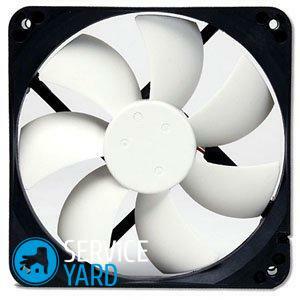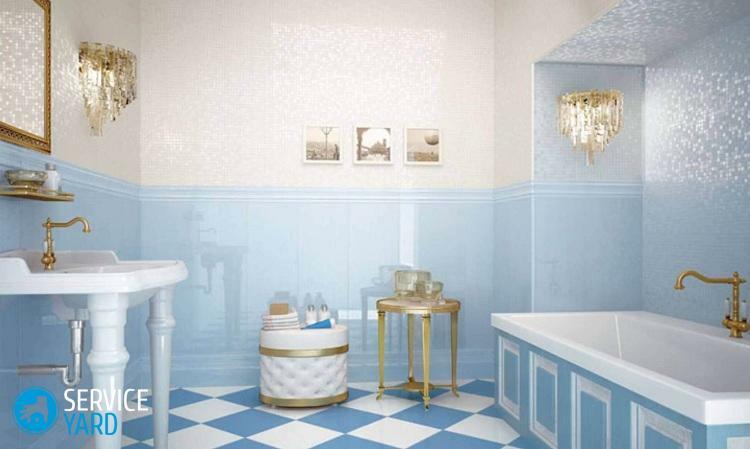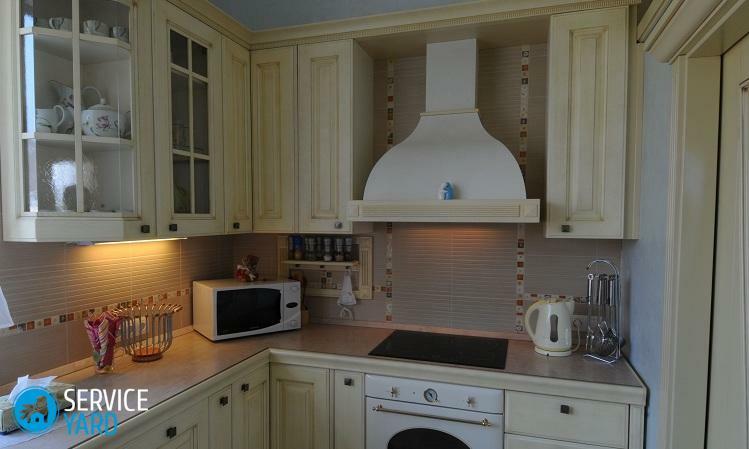
- Where is the fan most needed?
- What are the fans?
- Design features
- Where will it be?
- Additional differences
- How to choose a fan for the house?
- What do manufacturers offer?
Life in a modern apartment without ventilation will not just be uncomfortable - it's just hard to imagine. Ventilation systems are not possible without fans. They can vary very much in very different parameters, including power. How to choose an exhaust fan in terms of room volume? Now we will discuss this.
to the contents ↑Where is the fan most needed?
In a small private house, you can do without forced ventilation - windows and doors provide a sufficient supply of fresh air. But you can not say about city apartments. Air circulation is especially important where high humidity:
- in the kitchen;
- in the bathroom;
- in the toilet.
What happens if you leave these rooms without air exchange? Condensation will appear on the walls, and in large quantities. As a result, after a few weeks, all corners will become moldy. Only good circulation can help out, thanks to which the exhaust air will leave, and the fresh one will be in the room. But this will only happen in one case - if the exhaust fan is properly selected for the room volume and other parameters. The fan should not be:
- too weak;
- is too powerful.
Important! A weak fan does not provide sufficient airflow. Strangely enough, too powerful a device is also bad - there will be drafts, but not all of them are well tolerated.
So the question of how to choose a fan for ventilation is not as simple as it seems.
to the contents ↑What are the fans?
Fans are divided into the following parameters:
- designation;
- design features.
There are units designed for industrial buildings. They are very powerful and provide airflow to huge workshops. Household devices - more compact, give less power. Of course, they are also used in enterprises - in offices, bathrooms and other small rooms.
to the contents ↑Design features
When deciding how to choose a fan for hoods, note that according to design features they are divided into three types:
- axial;
- centrifugal;
- channel.
Axial
Such units are usually purchased for residential premises with an exhaust ventilation device. They are efficient, have sufficient power and are easily installed.
Centrifugal
This type of device is designed for large systems that help to circulate air in industrial buildings. In everyday life they are often called "snails".For apartments they are not very suitable because of the large dimensions.
However, it is now possible to meet "snails" installed in residential buildings - mainly in bathrooms. True, this is quite expensive. Pay for such a device will have three times more than for the axial. How well it will work depends on the size of the blades and their shape.

Ducted
Such devices are put directly into the duct. They come in different sizes and are oriented to different sections:
- round;
- are rectangular.
Such devices have very useful additional functions:
- humidity sensor;
- trip indicator.
Important! They are put not only in apartments, but also in swimming pools, saunas and other premises. For this, a waterproof cover is provided.
to the contents ↑Where will it be?
The domestic fans differ in the place of installation. They can be designed:
- for a bathroom;
- for the bathroom;
- for the kitchen;
- for rooms.
They have a different device:
- with check valve;
- with ventilation grille.
Important! Kitchens and bathrooms are equipped with a non-return valve, they are specially designed for such premises. Such a valve allows the exhaust air to be purified and returned to the room. Systems with ventilation grilles should be placed in rooms, then the exhaust air from the toilet will not reach the neighbors.
In addition, the fans are divided and in the place of attachment:
- window;
- wall mounted;
- ceiling.
Important! On sale it is possible to meet high-temperature fans - it is best to put them in the kitchen, although these are often put in saunas.
to the contents ↑Additional differences
There are devices that have features that do not allow to separate them into a separate class, but important ones. Fans are:
- noiseless,
- resistant to corrosion;
- protected from sparks;
- designed to remove smoke;
- dust;
- inkjet.
Important! Noiseless are often axial, and they are put in apartments. As for the other qualities, they are more relevant for industrial units, each of which can have an additional task - for example, removing dust or smoke from the tunnel.
to the contents ↑How to choose a fan for the house?
To choose a ventilating device for the home, you need to consider several criteria:
- performance;
- multiplicity;
- noise level;
- degree of protection against moisture;
- level of protection from heat;
- dimensions;
- design.
Performance of
This is the most important indicator.

Method first
It is counted according to the formula П = К * О.The following designations are used in the formula:
- П- productivity;
- K - multiplicity;
- О - volume of the room.
Multiplicity - a constant indicator. It is indicated in regulatory enactments, in particular, in SNiPs. But the volume must be calculated. However, this does not work - just remember the school program in mathematics:
- Measure the length, width and height of the room.
- Multiply what you got.
Important! To the productivity calculated by the formula, add another 10-15% - this is an error.
The second way to determine the performance of
In this case, too, the multiplicity factor is taken, but the exhaust fan is selected not by the volume of the room, but by the number of people who are constantly in the room.
The formula looks like this: П = К * Л, where П - productivity, К - multiplicity, Л - the number of people.
Multiplicity factors for different rooms
Of course, in a bakery or greenhouse the coefficient of multiplicity will differ from that in the bedroom or even in the kitchen. Therefore, different standards are established:
- bakery - 25-30;
- hairdresser - 3-6;
- restaurant - 6-10;
- office - 6-8;
- hospital room - 4-6
- bathroom or shower room - 10-15;
- toilet 3-10;
- kitchen in the apartment - 6-8;
- bedroom - 2-4;
- living room 4-6.
Noise level
During operation, any device of this kind emits some noise. The smaller it is, the more comfortable the inhabitants of the apartment will feel. There are two types of noise that come from the fans:
- mechanical;
- aerodynamic.
Mechanical occurs due to the friction of the blades, vibrations, and also if some parts are loose. Aerodynamic appears when air moves between the blades or through air ducts. Its level for residential premises should not exceed 25 dB.In the kitchen, bathroom and toilet the noise can be even higher - up to 35 dB.
Important! To reduce noise, an isolating box and special silencers are provided, but only in overall models.
Moisture Protection and Heat Resistance
These parameters are especially important if you choose an exhaust fan for a bathroom or sauna. It is especially important to protect the contacts from moisture, otherwise - there may be a short circuit with all the consequences.
For an ordinary apartment such an indicator as heat resistance is not particularly important. But devices that put in saunas, paired and other rooms with special climatic conditions, must necessarily be resistant to a very high temperature.

How convenient is it?
Installation of duct fan for extraction is usually entrusted to specialists, but you will have to operate the device without assistance. Therefore, it should be convenient. There are various options:
- with autonomous power on and off;
- fan, which turns on together with light;
- fan with humidity sensor and automatic shutdown.
Important! The first type does not depend on other systems. With a mechanical lever or touchpad, you turn it on or off when you think it's right. The most economical option. Models that are switched on together with light absorb a little more electricity than stand-alone ones. The most rational devices with sensors, but they are somewhat more expensive than others.
to the contents ↑What do manufacturers offer?
Manufacturers of home appliances enable their customers to select an exhaust fan in terms of volume and purpose of the room.
Overhead
For bathroom and toilets, wall-mounted overhead fans are suitable - the area of these rooms is usually not particularly large, and this design allows for significant energy savings. Mounted such a device is very simple, part of it is installed in the ventilation duct, the second - remains outside and is closed by a grate.
Window devices
The window fan is placed in the window. Sometimes they are mounted in a wall hole - where it is. If you decide to put such in an apartment with plastic windows, make sure that it is mounted in the double-glazed window, while it is not yet installed in the window opening.
There are several types of such devices by type of profile. It can be round or square. The first option is usually done with a check valve.
For kitchen
The kitchen fan is put in the cooker hood. That's where the question arises about the degree of heat resistance. The kitchen is certainly not a sauna, but the temperature can also be high enough, especially if you like a stove or you have an electric oven with a pyrolysis cleaning system. It is also important that the fan has a mesh that will prevent the ingress of soot and grease onto the blades.
Important! If you chose the axial model, note that the device must be disassembled to make it easier to clean.
In this article, we looked at the different types of exhaust fans, and found out which model is best for this or that room. Use this knowledge and advice to ensure that your home is always comfortable and cozy.



